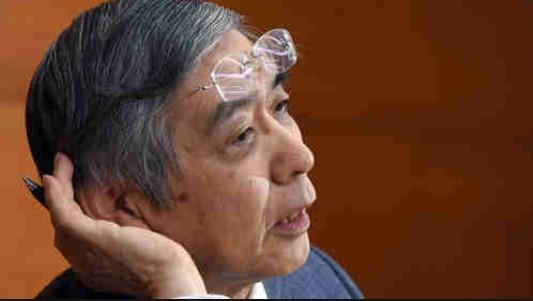When it comes to the biggest monetary experiment in modern history, namely Japan's QE which has seen the BOJ buy enough Japanese bonds to match the GDP of Japan, there is nothing more important than the BOJ having accurate metrics to determine if its "inflation targeting" is working, i.e., if wages and broader inflation are rising. Alas, the recent news that Japan's labor ministry published erroneous statistics for years, has raised doubt about not only the accuracy of economic analysis released by the Bank of Japan, but prompted investors to doubt absolutely every economic report published by Tokyo.
For those who are unfamiliar with the latest economic fake news scandal, on Wednesday Japan's labor ministry revised its monthly labor survey for the period between 2012 and 2018 admitting it had overstated nominal year-on-year wage increases by as much as 0.7 percentage point between January and November of last year, to take just one example.
Unfortunately, there are many other examples, and according to an Internal Affairs Ministry report released late Thursday, nearly half of Japan’s key economic government statistics need to be reviewed with 22 discrete statistics, or roughly 40% of the 56 key government economic releases, turning out to be "fake news" and in need to be corrected.
This is a major problem for Kuroda and the Bank of Japan which uses statistics from the labor ministry to compile two key pieces of economic data, in making its ongoing decisions whether to continue, taper or expand QE.
One, according to Nikkei, is the quarterly output gap which compares the nation's supply capacity with total demand. Supply capacity is derived from elements such as labor and capital spending. Data from the labor ministry survey, such as the number of hours logged by the workforce, is used to compute the output gap.
Japan's output gap has climbed further and further into positive territory. That has partially informed the BOJ's judgement that "Japan's economy is expanding moderately." The gap is also considered a leading indicator for inflation. A sustained positive reading could lead companies to raise prices and lift wages.
Meanwhile, even as Japan's consumer price index that excludes fresh foods continues to print below 1%, the BOJ has been stubbornly saying that prices are maintaining momentum toward its 2% inflation target, with the conclusion based in part on the output gap.
In retrospect, it now appears that the BOJ may have been "mistaken" and since the underlying data was erroneous for all the years during which Japan's QE was running, the BOJ will now face pressure to rework its entire framework and estimates in light of the data scandal.
"With regard to the extent of the impact, we intend to undertake a careful examination based on upcoming results of government studies," a BOJ spokesperson told Nikkei, offering a few other details.
In addition to the output gap, the services producer price index, released monthly, is the second key BOJ indicator reliant on the labor survey. If the BOJ is forced to drastically revise either this indicator or the output gap, it could introduce uncertainty about the conclusions reached by the central bank which has bought trillions in government bonds and stock ETFs relying on... fake economic data!
"There is no telling how far the impact has spread," said a senior BOJ official, and for the BOJ to admit that economic data in Japan is now sheer chaos and that inflation had been overstated for years, is nothing short of catastrophic.
Meanwhile, adding insult to injury, Japan's latest scandal means that whereas everyone had long been making fun of China's economic data for being manipulated, fabricated and goalseeked, Japan's own "data" was far, far worse.
In the BOJ's quarterly Outlook for Economic Activity and Prices, at least eight out of roughly 60 diagrams incorporate data from the labor survey. Those include charts depicting individual income, nominal wages and consumer spending. The latest report, released Wednesday, amusingly describes a "steady improvement in the employment and income situation." Alas, it turns out the improvement was only possible because the underlying data was wrong and/or "cooked."
The outlooks are considered valuable since they are based on the conclusions about the economy and prices reached by BOJ Gov. Kuroda. The central bank may see no need to revise earlier statements, but the reliability of the body risks being thrown into question regardless.
Meanwhile, just to demonstrate how much of a circular farce "data" in developed countries has become, after Japan’s labor ministry admitted it published faulty wage data, 79% of respondents in a Nikkei poll taken between Friday and Sunday said they now can’t trust government statistics, while 14% said they can. And, making the farce complete, a separate poll found that the approval rating for PM Shinzo Abe rose 6% from last month to 53% in the Nikkei poll, with his disapproval rating falling 7%.
We wonder how long before Japan admits that all of its polls showing support for the prime minister were just as fake.
via IFTTT

